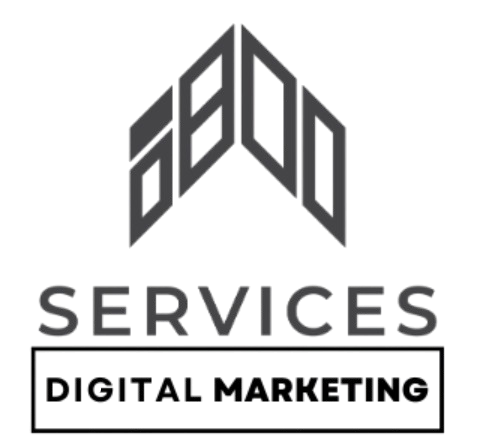Search Engine Marketing Consultants - Drive ROI & Visibility
A Search Engine Marketing (SEM) consultant is an expert dedicated to elevating your brand's presence and driving qualified traffic through paid advertising channels on search engines like Google and Bing. Their core focus lies in Pay-Per-Click (PPC) advertising, but their scope extends to a comprehensive array of paid search strategies designed to achieve your specific business goals—whether it's generating high-value leads, accelerating sales, or significantly boosting brand awareness.
They act as an extension of your team, bringing deep insights into search algorithms, keyword dynamics, and ad platform intricacies that are critical for success in a highly competitive digital landscape. Their expertise ensures your advertising budget is not just spent, but strategically invested for optimal returns.
Why Your Business Needs a Dedicated SEM Consultant
In today's interconnected world, simply having an online presence isn't enough. Your ideal clients are actively searching for solutions, and if your brand isn't appearing prominently at the moment of their intent, you're missing critical opportunities. However, navigating the nuances of bid strategies, ad copy testing, audience targeting, and constant algorithm updates can be incredibly time-consuming and complex, especially for rich, busy, brilliant people whose time is their most valuable asset.
This is why an SEM consultant is crucial: they offer the specialized knowledge, tools, and dedicated focus required to ensure your paid search efforts are consistently optimized, delivering the right message to the right audience at the right time, without demanding your direct, granular involvement. They free you to concentrate on your core business, confident that your marketing investment is being expertly managed.
What Our Search Engine Marketing Consultants Deliver
At i800services, our approach to search engine marketing is built on precision, efficiency, and a deep understanding of high-value client acquisition. Our search engine marketing consultants provide an end-to-end service designed for maximum impact:
Strategic Campaign Development: We begin with meticulous keyword research to identify the exact terms your high-value clients are using. We then craft compelling ad copy and design targeted campaigns that directly resonate with their intent, building a robust foundation for success.
Continuous Performance Optimization: Our focus is relentless analysis and agile adjustment. We constantly track key metrics such as Click-Through Rate (CTR), Cost Per Acquisition (CPA), and Return on Ad Spend (ROAS). This data-driven approach allows us to optimize bids, refine targeting, and enhance ad relevance, ensuring your budget is utilized with unparalleled efficiency and maximizes your ROI.
Conversion-Focused Approach: Driving traffic is only half the battle. Our consultants specialize in optimizing landing pages to ensure that visitors arriving from your ads are seamlessly guided towards desired actions, whether it's a booking, a consultation request, or a direct sale. Every click is leveraged to its full conversion potential.
Competitive Intelligence & Brand Protection: We continuously monitor the competitive landscape, ensuring your ads not only appear in the most prominent positions but also stand out against rivals. This proactive management protects your brand's visibility and market share.
Transparent Reporting & Actionable Insights: You'll receive clear, concise reports that cut through the noise, providing high-level insights into performance, key trends, and strategic recommendations, empowering you to make informed decisions quickly.
Brand Visibility
Discover how to increase brand visibility with precision. Our strategies optimize your digital presence, content, and partnerships for top-tier recognition & high-value client acquisition.
Explore integrated marketing solutions for strategic growth. Our end-to-end approach leverages data & multi-channel precision to boost ROI & deliver high-value conversions.
Optimize your marketing performance for maximum ROI. Get data-driven insights to boost conversions, reduce costs, and accelerate strategic business growth efficiently.
Your dedicated Marketing consultant for strategic growth. Gain expert advice, optimize performance, and achieve high-value conversions. Protect your time.



Invest Once, Optimize Forever
#OnlineVisibility
#QualifiedLeads
#DigitalGrowth
#i800services
How to Increase Brand Visibility: Establishing Elite Thought Leadership
For rich, busy, brilliant people, increasing brand visibility isn't merely about being seen; it's about establishing an undeniable presence and positioning your enterprise as a definitive thought leader in your domain. We craft a multi-faceted strategy designed for maximum impact with minimal oversight from your end.
Core Pillars for Dominant Visibility:
- Digital Foundation & SEO Excellence: We ensure your website achieves top-tier rankings on search engines and offers flawless accessibility. This guarantees your ideal clients effortlessly discover and respect your brand's authoritative online presence.
- Strategic Content & Voice: We create valuable, expert-level content (e.g., incisive articles, exclusive insights) that organically attracts your target audience and unequivocally positions you as an industry authority.
- Influential Connections & Amplification: We partner with respected influencers and complementary brands to tap into new, relevant audiences, lending instant credibility. Furthermore, we empower your satisfied clients and even your team to become powerful brand ambassadors, generating authentic buzz and referrals that reinforce your leadership position.
- Precision Digital Advertising: We invest in highly targeted ads on key platforms to reach specific demographics efficiently, ensuring your message permeates your desired market and reinforces your elevated status.
The Outcome: This integrated approach doesn't just increase visibility; it strategically establishes your brand's commanding presence and thought leadership, allowing you to protect your valuable time while our team executes with precision.
How to Get More Leads Online: Leveraging Expertise for Qualified Engagement
For rich, busy, brilliant people, generating leads transcends mere volume; it's about acquiring high-value, qualified prospects by demonstrating unparalleled expertise and providing invaluable insights, all without consuming your precious time. Our precise, streamlined system attracts, engages, and converts.
The Essentials for Expert Lead Generation:
- Strategic Attraction through Insight: We create expert-level, magnetic content (e.g., proprietary whitepapers, exclusive webinars) that organically draws in your target audience by offering valuable insights and establishing your undeniable authority. This positions your expertise directly at the forefront of their search.
- Targeted Outreach for Qualified Engagement: We leverage advanced SEO and precisely segmented paid campaigns on platforms where your ideal clients engage, ensuring every impression counts and leads to genuine interest.
- Efficient Capture with Value Exchange: We design valuable "lead magnets" (e.g., private checklists, advanced insights) exchanged for contact information, streamlining data collection while delivering perceived value upfront.
- Precision Nurturing for Deeper Trust: We deliver tailored communication that addresses individual prospect needs, building trust and guiding them discreetly through the sales funnel based on the ongoing value you provide.
The Outcome: This methodical system ensures your lead generation efforts are constantly optimized, delivering high-value leads, calls, and bookings by consistently providing valuable insights and positioning your expertise as the go-to solution, driving your strategic growth.
Marketing Solutions: Building Trust with a Unique End-to-End Approach
For rich, busy, brilliant people, marketing solutions must be comprehensive, effortless, and fundamentally trustworthy. You need a strategy that showcases your distinct methodology, covering every aspect of the customer journey from initial discovery to loyal advocacy, all while protecting your invaluable time. Our end-to-end approach ensures your marketing is fully integrated, data-driven, and delivers high-value conversions with unparalleled precision, thereby building profound trust and demonstrating our unique methodology.
Why Our End-to-End Marketing Solutions Deliver Trust:
- Holistic Strategy for Proven Impact: We meticulously manage every stage of your customer's journey, from awareness to loyalty, ensuring a seamless, integrated experience that inherently builds confidence in our comprehensive capability.
- Data-Driven Precision & Transparency: Every decision is backed by real-time data and clear reporting, optimizing campaigns to maximize your ROI. This transparent, analytical approach clearly demonstrates our unique, results-oriented methodology.
- Seamless Multi-Channel Integration: Your brand maintains a consistent, compelling, and coordinated presence across all digital channels (SEO, social media, email, ads). This unified brand experience reinforces reliability and our integrated approach.
- Personalized Experiences & Accelerated Conversions: We deliver targeted content that resonates personally with your audience segments, streamlining their journey. This dedication to individualized engagement highlights our unique client-centric approach and builds profound trust.
The Benefit: This integrated strategy not only significantly enhances the customer experience and builds a stronger brand, but critically, it provides data-driven decision-making and tangible ROI that consistently builds trust and showcases the unique effectiveness of our marketing solutions.
Marketing Consultant: Your Partner in Client Acquisition
For rich, busy, brilliant people, a marketing consultant is more than an advisor; they are your direct strategic partner in converting qualified prospects into high-value clients, maximizing ROI and preserving your precious time. We provide expert insights and execution, focused on delivering immediate, measurable results.
How a Marketing Consultant Drives Client Acquisition:
- Precision Strategy for Conversion: We define clear marketing objectives directly aimed at client acquisition, crafting bespoke plans that identify and target your ideal prospects and the most effective channels to engage them.
- Expert Execution & Conversion Optimization: Beyond strategic planning, we guide the implementation of campaigns across all digital channels (SEO, social, paid ads), continuously optimizing performance to convert prospects efficiently and ensure maximum return on your marketing investment.
- Unbiased Market Insights for Targeting: Gain an external, objective perspective on market trends and customer behavior, informing data-driven decisions that enable precise targeting and accelerate the prospect-to-client journey.
- Cost-Effective Expertise & Seamless Integration: Access specialized knowledge and experience without the overhead of a full-time hire. Our flexible model allows for direct integration with your existing operations to streamline prospect conversion pathways.
The Outcome: Partnering with a marketing consultant means achieving significantly increased ROI by effectively turning qualified prospects into loyal clients, gaining access to cutting-edge strategies, and securing an optimized marketing performance that propels your business forward with precision and efficiency.
Marketing Performance: Fueling Client Satisfaction & Recurring Business
For rich, busy, brilliant people, marketing performance extends beyond initial ROI; it's the bedrock for maintaining client satisfaction and fostering invaluable recurring business. You need clear, actionable insights into what truly works, enabling continuous optimization of your marketing spend for enduring relationships, all while protecting your valuable time.
Key Aspects of Our Performance Focus for Retention:
- Goal Alignment & Long-Term Metrics: We define and track specific, high-impact KPIs that not only reflect immediate business goals but also long-term client value and satisfaction (e.g., Customer Lifetime Value (CLTV), Customer Retention Rate).
- Continuous Optimization for Enduring Value: Our data-driven approach constantly analyzes campaign effectiveness, allowing for agile adjustments that maximize engagement and improve the perceived value of your offerings, directly contributing to client satisfaction.
- Actionable Insights for Relationship Growth: We provide clear, concise reporting that identifies your most effective strategies for ongoing client nurturing, helping you understand evolving customer behavior and enabling smart resource allocation to foster recurring business and strengthen loyalty.
The Outcome: By precisely measuring and optimizing marketing performance, we help you not only achieve initial business growth but crucially, pinpoint strategies that enhance client satisfaction, improve retention rates, and consistently drive recurring business, all with minimal demand on your time.
Marketing Partnerships: Activating Referrals, Testimonials & Expansion
For rich, busy, brilliant people, marketing partnerships are more than just collaborations; they are strategic alliances designed to amplify your influence, generate high-quality referrals and testimonials, and unlock lucrative upsell/cross-sell opportunities – all without draining your valuable time or resources. It's about leveraging complementary strengths to achieve exponential, high-value growth.
The Power of Strategic Marketing Partnerships:
- Expanded Reach & New Audience Referrals: By collaborating with complementary brands or influencers, you gain direct access to their established networks, significantly broadening your market presence and creating pipelines for qualified referrals.
- Enhanced Brand Reputation & Testimonial Capture: Associating with trusted, reputable partners elevates your own brand's image and credibility. This fosters deeper trust, making it easier to secure compelling testimonials that validate your success.
- Cost-Efficient Growth & Upsell/Cross-Sell Pathways: Share marketing costs and resources, making your outreach more effective. Critically, partnerships often reveal synergistic opportunities for upselling and cross-selling to a highly receptive, pre-qualified audience.
- Mutually Beneficial Outcomes & Advocacy: Every partnership is engineered for shared success, ensuring both parties gain valuable resources, increased sales, and improved customer loyalty. This mutual benefit naturally leads to increased advocacy for your brand.
The Outcome: Embracing marketing partnerships allows you to amplify your marketing efforts, achieve greater sales through new referrals and testimonials, and proactively explore upsell/cross-sell avenues, leveraging external resources to protect your valuable time and secure elite business growth.
Search Engine Marketing Consultants: Securing High-Value, Long-Term Engagements
For rich, busy, brilliant people, a search engine marketing consultant is your direct pipeline to accelerating online growth, maximizing ad spend efficiency, and most critically, securing high-value, long-term engagements with top-tier clients. You need specialized expertise that delivers measurable results without consuming your valuable time.
What a Top-Tier SEM Consultant Delivers for High-Value Engagements:
- Strategic Campaign Development for Elite Acquisition: We conduct deep keyword research and craft compelling ad copy, building targeted campaigns designed specifically to attract and engage your ideal top-tier clientele.
- Continuous Performance Optimization for Sustained ROI: Our focus is on relentless analysis and adjustment. We track key metrics to boost click-through rates and reduce your cost-per-acquisition, ensuring your ad spend is always efficient and contributing to long-term client value.
- Conversion-Focused Landing Pages for Premium Leads: We optimize your landing pages to ensure that high-value visitors are effectively guided towards desired actions, maximizing the conversion of discerning prospects into qualified, long-term leads.
- Expertise & Efficiency for Confident Investment: Access in-depth knowledge of search engine algorithms and advertising platforms without the overhead of an in-house team. We align all efforts directly with your business goals, building the confidence required for high-value, enduring partnerships.
The Outcome: Partnering with search engine marketing consultants means achieving increased online visibility, driving highly qualified traffic and leads, and securing a cost-effective advertising strategy that not only delivers significant business growth but specifically cultivates and secures high-value, long-term engagements with your top-tier clients, all while protecting your time.
Remote Support
Learn about new effective opportunities to enhance your team, marketing, and advertising efforts.
